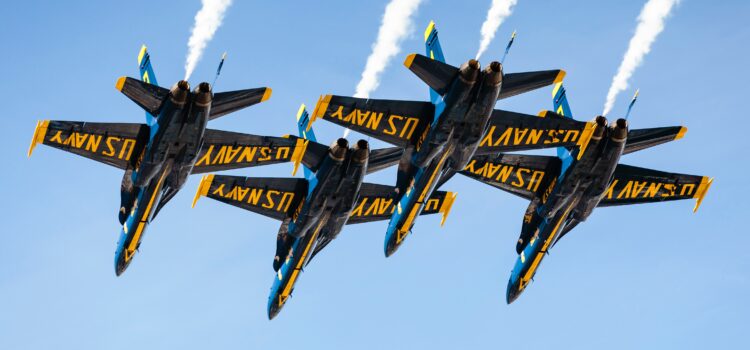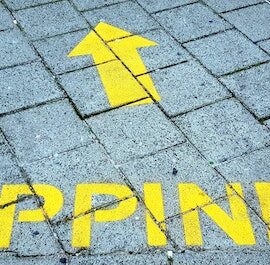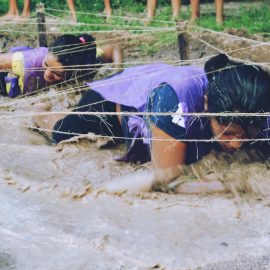

This article is an excerpt from the Shortform book guide to "Can't Hurt Me" by David Goggins. Shortform has the world's best summaries and analyses of books you should be reading.
Like this article? Sign up for a free trial here .
What was David Goggins’ Navy SEAL training like? Did David Goggins ever become a Navy SEAL?
David Goggins’ Navy SEAL training began when he saw a commercial. Goggins had previously been in the Air Force and believed that being a SEAL would give him a purpose in life.
Read more about David Goggins’ Navy SEAL training.
David Goggins: Navy SEAL Training
One day, Goggins watched a TV program about joining the Navy SEALs, one of the most elite special forces teams in the US military. He became convinced that he could find purpose for his life by becoming a SEAL.
He attempted to contact various naval recruiters, but most weren’t interested in recruiting previously-enlisted people from other parts of the military. One recruiter agreed to meet with him but was unwilling to enlist him because of his weight.
He found a recruiter willing to give him a chance, but to apply, he needed to get his weight down to below 191 pounds, the weight limit for a man of his height. He also needed to pass the same qualifying test he’d taken to get into the Air Force, but with a better score.
Goggins had 3 months to study for the test and lose 106 pounds. He started filling his days with running, swimming, biking, and weightlifting. At first, he could barely run 400 yards without needing a break. Because of this, David Goggins’ Navy SEAL training began before he even entered the program.
If he skimped on any of his planned training, he made himself do the complete workout over again. For example, one day he decided not to do the last pull-up of his set, but he worried that cutting corners like that could cost him entry. So later that night, he returned to the gym and redid the entire set of 250 pull-ups. In addition to exercising, he adjusted his diet, eating small portions of healthy foods and ditching his go-to junk foods.
When he started doubting himself—feeling like he was crazy for attempting this—or feeling depressed, he refused to wallow and worked to redirect that energy into the tasks at hand, like exercising. He convinced himself that his struggles were evidence of having a new purpose in his life, which motivated him to stick with his training and studying. He was able to pass the exam and lose 106 pounds to qualify for entry.
Hell Week
David Goggins’ Navy SEAL training officially began during Hell Week. Goggins needed to survive grueling training to become a SEAL. During one of the training periods, called Hell Week, the recruits are broken into teams and subjected to hours of physically demanding tasks, such as running miles in the sand, running holding logs or boats overhead, and standing in the cold ocean. Two-thirds of recruits drop out of the program during this week.
Goggins contracted pneumonia in both lungs and needed time to recuperate. By the time he’d recovered enough to resume training, he’d missed enough training that he’d need to start Hell Week from the beginning.
Before entering Hell Week a second time, Goggins realized that he wanted some tools to help him succeed. As with other military training, recruits are subjected not only to physically demanding activities, but also to intense verbal interactions from officers as they try to weed out the mentally strong from the weak. Goggins perceived these men as his opponents—they were actively trying to break him and the other men down and make them quit. He wanted to prove that he could survive Hell Week and impress them in the process.
To do this, he came up with two main strategies:
- Get the schedule of events. Recruits weren’t typically allowed to see the schedule of events, but Goggins thought it’d greatly increase their chances of surviving by knowing what came next.
- Help the team find its second wind. Toward the end of Hell Week, Goggins’s team was exhausted. The men needed to harness any remaining energy to keep going and exceed their superiors’ expectations. He reminded his team that the officers wanted to break them down and encouraged them not to give them the satisfaction. Goggins calls this “taking souls”—acknowledging your opponents and using your feelings toward them to fuel your best work, take them by surprise, and earn their respect.
Using these strategies, Goggins and his entire team survived Hell Week, with no one going home. (Shortform note: To learn more about the strategies SEAL trainees use to survive Hell Week (and how to apply these lessons in your everyday life), read our summaries of Extreme Ownership and Make Your Bed.)
Leaving SEAL Training
Unfortuantely, David Goggins’ Navy SEAL training was paused. In addition to the double pneumonia Goggins developed during his first round of Hell Week, he developed a severe knee injury. Though he wanted to continue training, the injury—a broken kneecap—wasn’t healing quickly enough, so he went home to Indianapolis to recover.
Because it was only an injury, he’d be allowed to return, but he’d be required to do Hell Week training for a third time. And if he survived, he’d need to train for another 6 months to become a SEAL.
While he spent time recovering, he learned that he would be becoming a father with his ex-wife, whom he had recently divorced. He felt unready and unsure of how to meld his life in Indiana with training to become a SEAL in California.
Though he considered quitting, he thought it would be a bigger failure to give up SEAL training than to try one more time and fail.
He decided to continue with training, remarry his wife, and move with her and his stepdaughter to California while he attempted to complete the training. David Goggins’ Navy SEAL training was put on hold, but he didn’t give up.

———End of Preview———
Like what you just read? Read the rest of the world's best book summary and analysis of David Goggins's "Can't Hurt Me" at Shortform .
Here's what you'll find in our full Can't Hurt Me summary :
- What a Navy SEAL says about pushing yourself to achieve greatness
- How to put in more effort to realize your potential
- The 10 challenges you can take on to reach your goals






